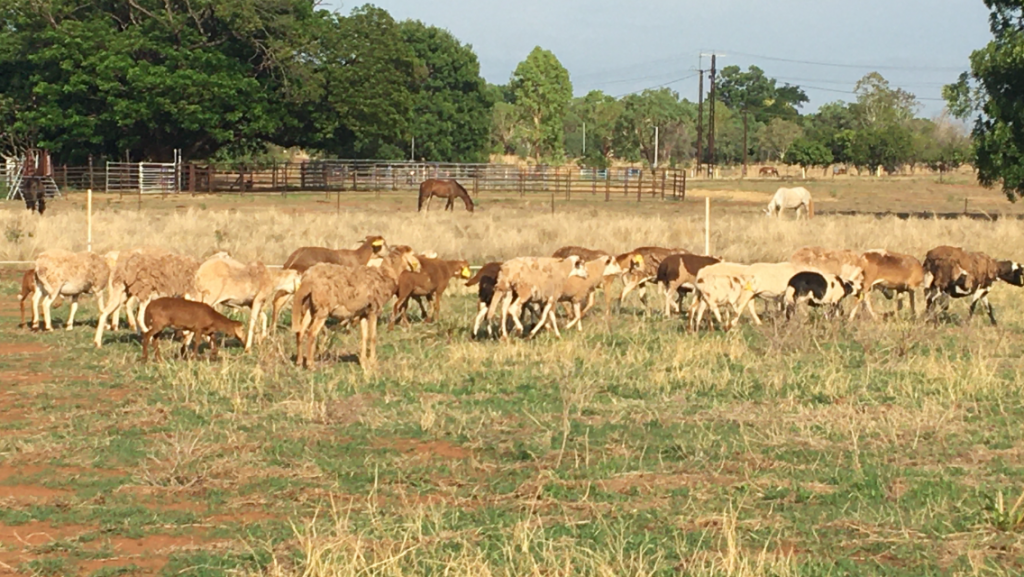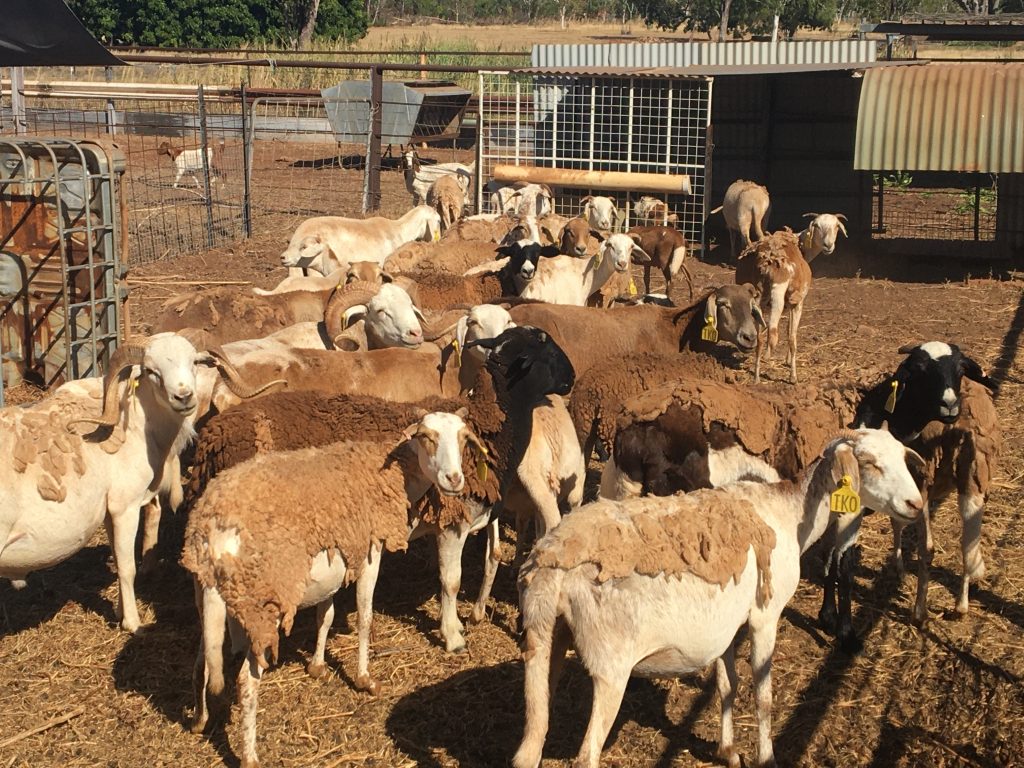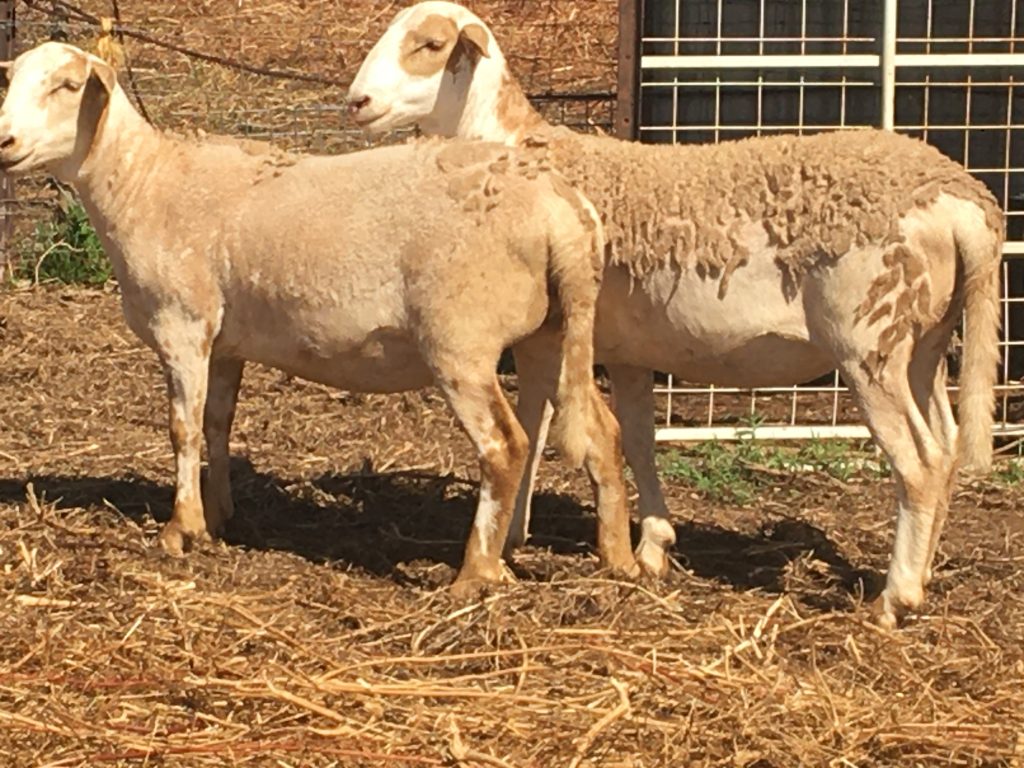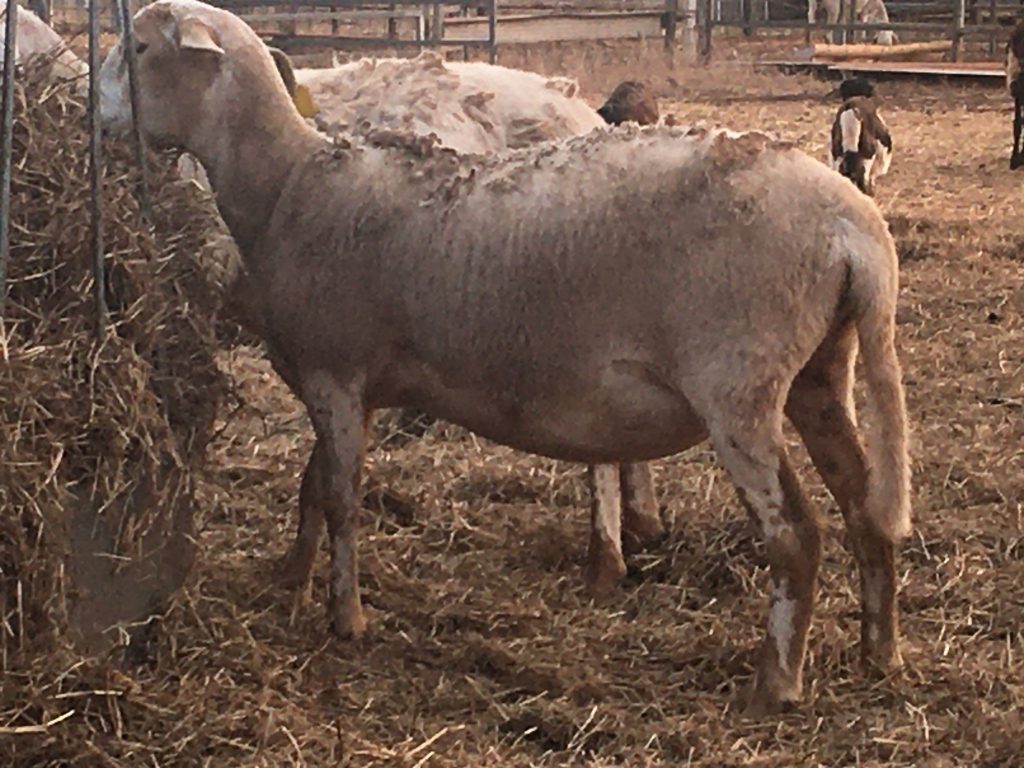Mark Flynn explains about the use of commercial Damara in the Northern Territory

Living on the edge of the sub tropics in the NT where summer temps hit 40degs plus, high spirit sapping humidity and over 6 months of no rain at all the Damaras have well and truly proved they can perform, produce and do well under all conditions.
There foraging ability is second to none. I have found they compliment my existing cattle enterprise by readily eating the shrubs or weeds that are over looked by the cattle.
They are easy to muster into yards and are quite happy to return at night for the security the yards present .They are easy on fences n happy just to stay in a safe mob.
In monsoon times they are still able to go out in search for food whereas goats and cattle tend to shelter for longer therefore losing condition that can take alot of time to put back on.
I supplement the dry season feed with a mineral block that appears to not only increase fertility but helps to maintain their body weight.
They quite often appear to have nurseries where by 1 or 2 ewes stay behind while the rest go out and feed.
I have only ever seen brahman cattle do similar and having spent most of my life up here I’m not sure if that is a common trait for other breeds of sheep and cattle!
The Damara sheep up here in the extremes (which I’m sure would be similar to there native countries) have proven way beyond doubt that they are a future in sheep meat diversification for the harsher areas of Australia.



